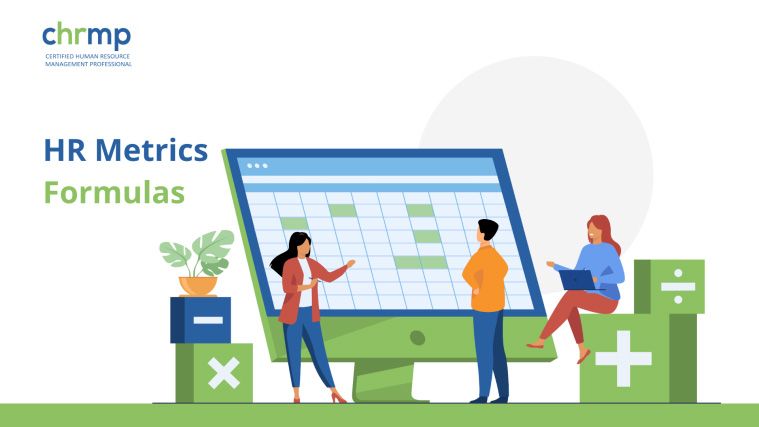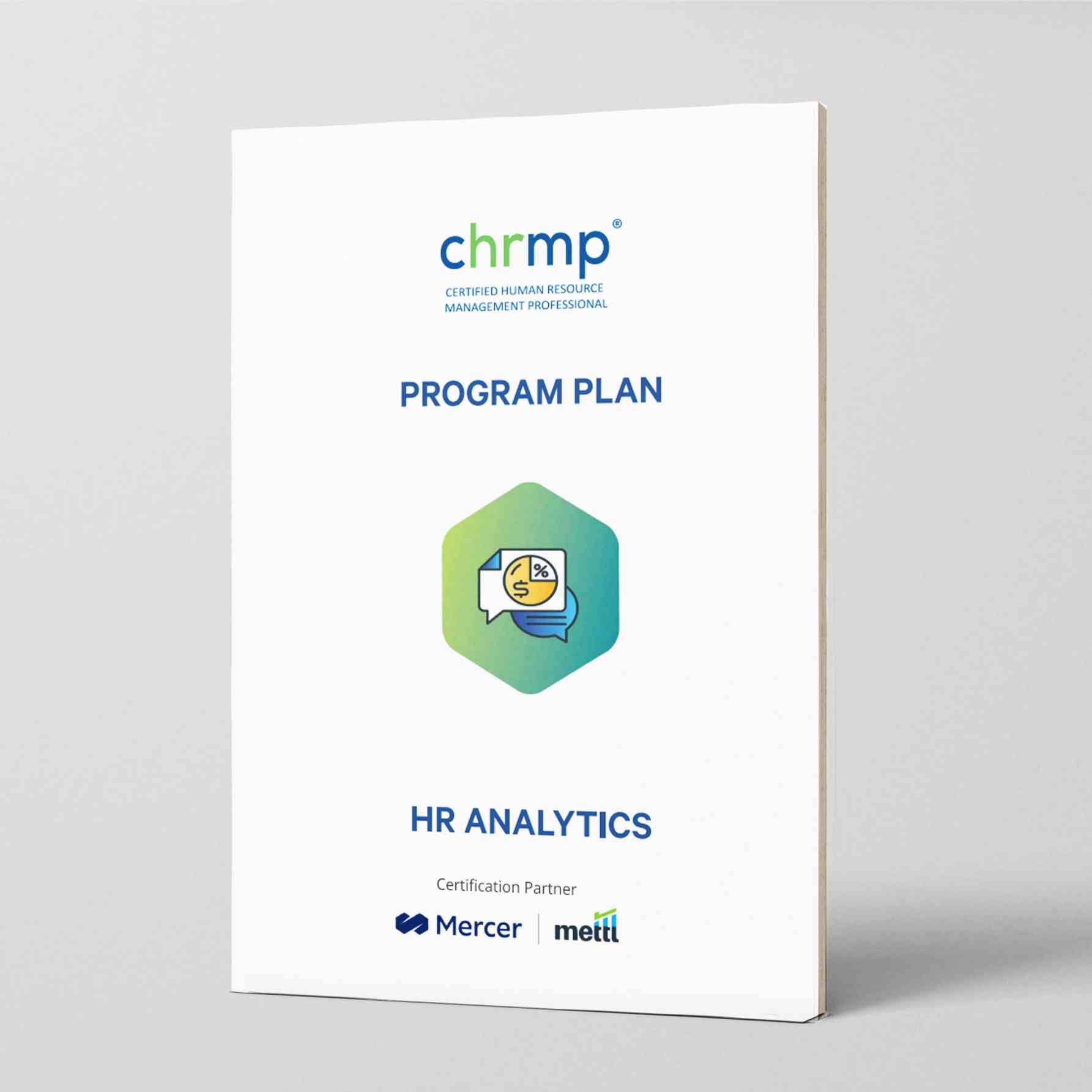

Measuring and keeping track of key HR metrics is vital for the smooth functioning of an organisation.
HR metrics help gain valuable insights into the effectiveness of your HR initiatives, help you identify areas for improvement and make data-driven decisions to address them effectively which, in turn, will positively impact several key areas of the company including employee engagement, productivity, retention, etc.
In this blog, we shall discuss the definition of HR metrics formulas, their importance, and some types.
So without further ado, let’s begin.
HR metrics formulas are mathematical equations that are used to measure key aspects of a company’s human resource management.
They are designed to help HR professionals collect and analyse data regarding the workforce in order to gain valuable insights that help them make data-driven decisions that help the company achieve its goals.
HR metrics formulas measure a variety of factors influencing a company’s functioning, including employee productivity and performance, employee turnover, absenteeism, training effectiveness, recruitment and selection, attrition and retention, etc.
These metrics help HR managers track progress over time, identify weaknesses and areas for improvement and take effective steps to address them.
Some commonly used HR metrics formulas include retention rate, attrition rate, employee turnover rate, etc.
HR metrics formulas are important because they help HR managers evaluate and manage the performance of the workforce. HR metrics formulas provide valuable data on key aspects of the workforce including performance, productivity, retention rate, etc. which helps HR build effective strategies to address any shortcomings.
One key benefit of HR metrics formulas is that they help the organisation measure the effectiveness of their HR initiatives. For example, HR metrics formulas can help organisations track employee productivity scores and analyse the effectiveness of productivity boosting initiatives.
Another important benefit of HR metrics formulas is that they help organisations identify and address underlying issues before they turn into bigger problems.
For example, by using the formula for measuring attrition rate, organisations can track the rate at which employees leave the company and take suitable steps to address it if the rate is too high.
To summarise, HR metrics formulas are essentials in an HR manager’s toolkit that help them optimise the effectiveness of HR initiatives that contribute to the organisation’s success in the long run.
Here are the top five benefits of using HR metrics:
1.Data-Driven Decision Making
HR metrics provide objective data that can be used to make informed and data-driven decisions regarding various HR initiatives, such as talent acquisition, employee engagement, performance management, and training and development.
2. Performance Monitoring
HR metrics enable organizations to monitor and evaluate the performance of HR processes and initiatives. By tracking key metrics, organizations can identify areas of improvement, measure progress, and assess the effectiveness of HR strategies.
3. Identifying Trends and Patterns
Analyzing HR metrics over time can help identify trends and patterns within the workforce. This information can be used to anticipate future challenges, detect potential issues, and proactively address them.
4. Benchmarking and Comparison
HR metrics allow organizations to benchmark their performance against industry standards and best practices. By comparing metrics with similar organizations, businesses can gain insights into areas where they may be lagging or excelling, and make necessary adjustments.
5. Demonstrating ROI
HR metrics provide a means to measure the return on investment (ROI) of various HR initiatives. By quantifying the impact of HR programs and processes, organizations can better allocate resources, prioritize initiatives, and showcase the value HR brings to the overall business strategy.
Overall, HR metrics provide a quantifiable and strategic approach to managing human resources, allowing organizations to make evidence-based decisions, monitor performance, identify trends, benchmark against peers, and demonstrate the value of HR investments.
HR metrics formulas that organisations use to measure various aspects of their human resources management processes and practices, can be many. Here are seven of the most commonly used HR metrics formulae:
1. Turnover Rate
The rate at which employees leave an organisation over a certain period of time is called turnover rate. The formula for turnover rate is:
Turnover Rate = (Number of Employees who Left / Average Total Number of Employees) x 100%
A high turnover rate is indicative of issues with employee retention, which could be a result of poor management, dissatisfactory reward or compensation system, low employee engagement, or other factors.
2. Absenteeism Rate
Absenteeism rate is a measure of The percentage of workdays missed by employees over a certain period of time is called absenteeism rate. The formula for absenteeism rate is:
Absenteeism Rate = (Total Number of Days Absent / (Number of Employees x Number of Workdays)) x 100%
High absenteeism rates indicate poor employee engagement, job dissatisfaction, discrimination in the workplace or other factors that are affecting employee motivation, performance and productivity.
3. Time to Fill
Time to fill is a measure of the time taken to fill open job positions within an organisation. The formula for time to fill is:
Time to Fill = (Total Number of Days to Fill Position / Total Number of Open Positions)
A long time to fill indicates that an organisation is struggling to attract qualified candidates, which could be a sign of issues with recruitment processes or a lack of competitive compensation, faulty or dissatisfactory reward system, lack of future advancement in career opportunities .
4. Cost per Hire
The total cost incurred by an organisation to fill an open position is called cost per hire. The formula for cost per hire is:
Cost per Hire = (Total Recruiting Costs / Total Number of Hires)
Measuring cost per hire, helps organisations evaluate the effectiveness of their recruitment processes and identify opportunities to reduce hiring costs.
5. Revenue per Employee
An organisation’s revenue generated per employee over a certain period of time say an year is called revenue per employee.The formula for revenue per employee is:
Revenue per Employee = Total Revenue / Total Number of Employees
Revenue per employee helps evaluate the overall productivity and efficiency of an organisation’s workforce. A high revenue per employee is a sign of good health of the company.
6. Employee Engagement Score
Employee engagement score is a measure of the level of engagement and satisfaction among an organisation’s employees. High engagement score indicates less absenteeism among the workforce and fewer incidences of job abandonment over a given period of time, say, a year.
The formula for employee engagement score varies depending on the survey used to measure it, but typically involves a combination of responses to questions related to job satisfaction, work environment, and other factors.
7. Human Capital ROI (Return on investment)
Human capital ROI is a measure of the return on investment that an organisation receives from its human capital. The formula for human capital ROI is:
Human Capital ROI = (Total Benefits of Human Capital – Total Costs of Human Capital) / Total Costs of Human Capital
By measuring human capital ROI, organisations evaluate the effectiveness of their human resources management practices and processes for the purpose of identifying opportunities to improve the return on investment from their workforce.
In addition to the HR metrics formulas listed above, there are many other HR metrics that help companies evaluate various aspects of their workforce management. Some additional HR metrics that companies commonly use are:
1. Time to productivity
The length of time taken by a new employee to become fully productive in their role is called time to productivity. This metric is used to evaluate the effectiveness of onboarding and training programs or spot flaws if any.
2. Employee satisfaction score
Employee satisfaction score measures The level of satisfaction of employees with their jobs, work environment, and other aspects of their employment when quantified is called Employee satisfaction score. This metric is used to evaluate the overall health of an organisation’s workforce.
3. Training and development investment
Training and development investment measures the amount of resources that an organisation invests in employee training and development programs. This metric is used to evaluate the effectiveness of their training and development programs at the same time, identify areas for improvement, if any.
4. Diversity and inclusion metrics
Diversity and inclusion metrics measure the level of diversity and inclusion within an organisation’s workforce. These metrics include measures of employee demographics, pay equity, and employee satisfaction among underrepresented groups of the workforce .
5. Performance metrics
Performance metrics measure the performance of individual employees, teams, or the organisation as a whole. This metric includes measures of productivity, sales, customer satisfaction, or other factors relevant to the organisation’s goals.
6. Cost of HR per employee
The amount of money an organisation spends on HR functions per employee is called Cost of HR per employee. This metric is used to evaluate the efficiency of HR practices/processes and identify opportunities to reduce costs.
7. HR-to-employee ratio
The number of HR professionals per employee within an organisation is called HR-to-employee ratio.This metric is used to evaluate the effectiveness of HR resource allocation and identify areas to improve HR support for employees.
To conclude, there are many HR metrics formulas that companies use to evaluate various aspects of their human resources management. On tracking and analysing these metrics, companies gain valuable insights into their workforce, which enables them to make data-driven, accurate and informed decisions to optimise HR programs efficacy and improve overall organisational performance.
1. What are HR metrics formulas?
HR metrics formulas are quantifiable measurements that organizations use to evaluate and analyze various aspects of their human resources management. These metrics can include measures of employee turnover, absenteeism, productivity, engagement, and other factors that affect the effectiveness of an organization’s workforce.
2. Why are HR metrics important?
HR metrics are important because they provide organizations with valuable insights into their workforce and enable data-driven decision-making. By tracking and analyzing HR metrics, organizations can identify areas for improvement, evaluate the effectiveness of HR programs, and optimize their human resources management strategies.
3. How do you calculate HR metrics?
The formula for calculating HR metrics varies depending on the metric being measured. Some common HR metrics formulas include turnover rate, absenteeism rate, time to fill, cost per hire, revenue per employee, and human capital ROI. Each of these formulas involves specific calculations based on data related to employees, recruitment, and other HR functions.
4. What are the benefits of using HR metrics?
The benefits of using HR metrics include improved workforce management, increased productivity and efficiency, better employee engagement and retention, reduced costs, and improved overall organizational performance. By using HR metrics to evaluate and optimize their human resources management, organizations can achieve a competitive advantage and better position themselves for long-term success.
5. What are some common challenges associated with HR metrics?
Some common challenges associated with HR metrics include the difficulty of collecting accurate and reliable data, the complexity of measuring intangible factors like employee engagement and satisfaction, and the potential for metrics to be misinterpreted or used inappropriately. To overcome these challenges, organizations should establish clear data collection processes, use standardized metrics, and communicate the meaning and limitations of HR metrics effectively to stakeholders.
In conclusion, HR metrics are an essential tool for organizations to evaluate and optimize their human resources management strategies.
By tracking and analyzing various HR metrics, organizations can gain valuable insights into their workforce and make data-driven decisions to improve productivity, efficiency, engagement, and overall organizational performance.
From turnover rate and absenteeism rate to time to productivity and training and development investment, there are a wide variety of HR metrics that companies can use to evaluate and improve their human resources management.
However, it is important to recognize that HR metrics are not a one-size-fits-all solution and should be selected and used carefully to ensure they align with an organization’s goals and values.
With proper planning, data collection, and analysis, organizations can use HR metrics to achieve a competitive advantage and position themselves for long-term success.
© 2007-2025 CHRMP| All Rights Reserved | Powered by Ripples Learning & Research Private Limited

Fill in the below details to get a CHRMP HR Analytics Program Plan.
